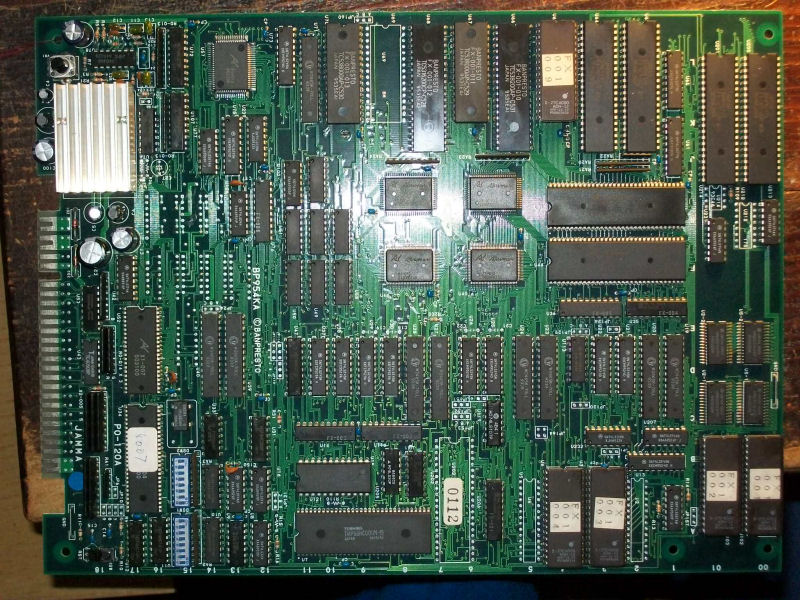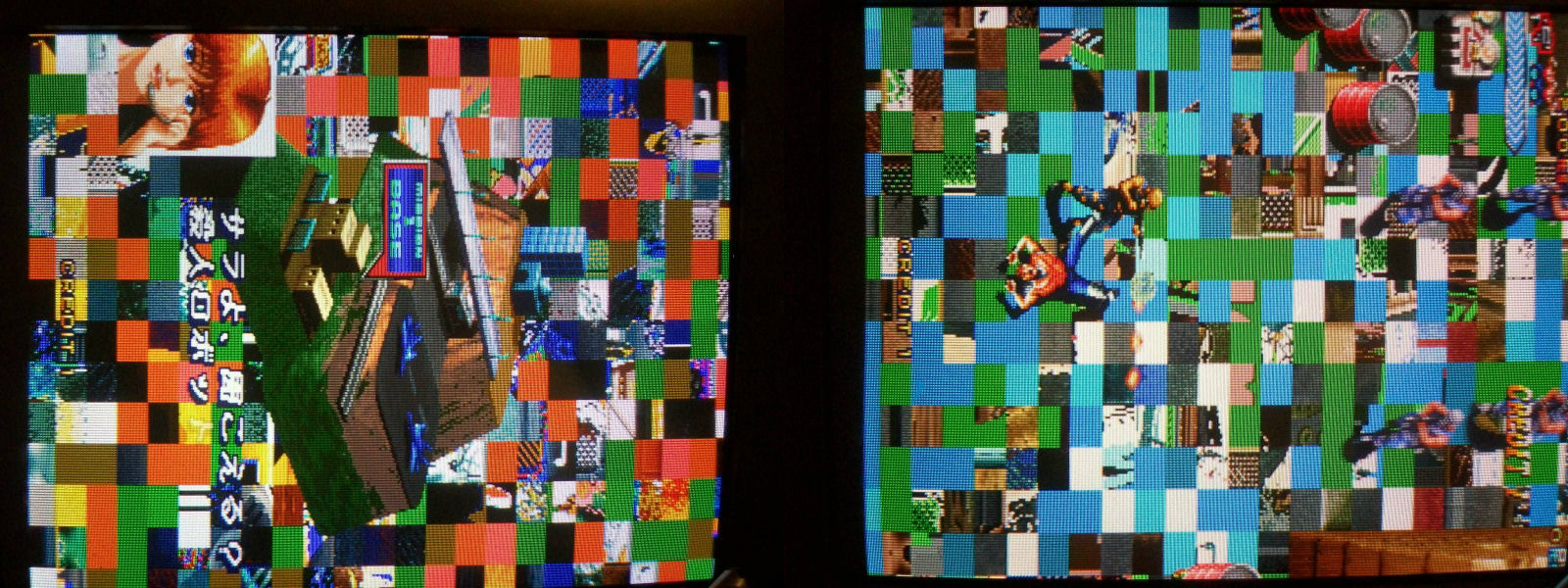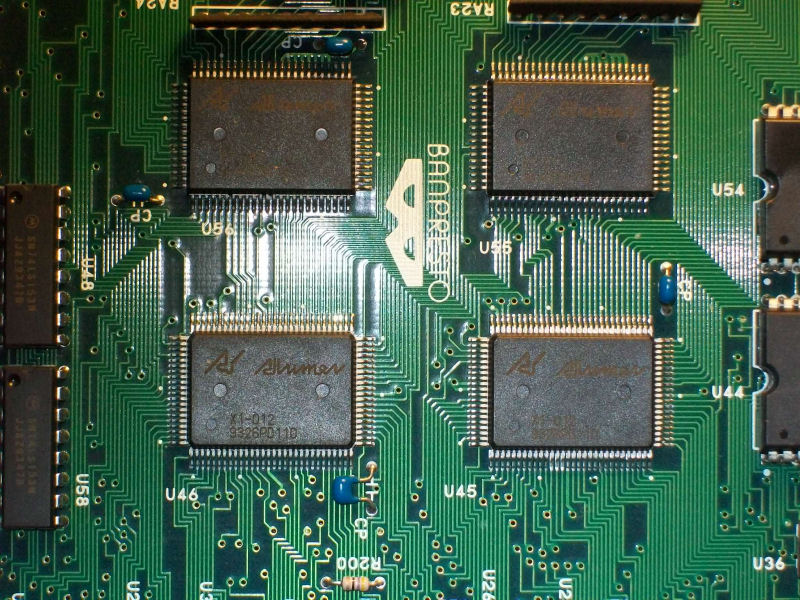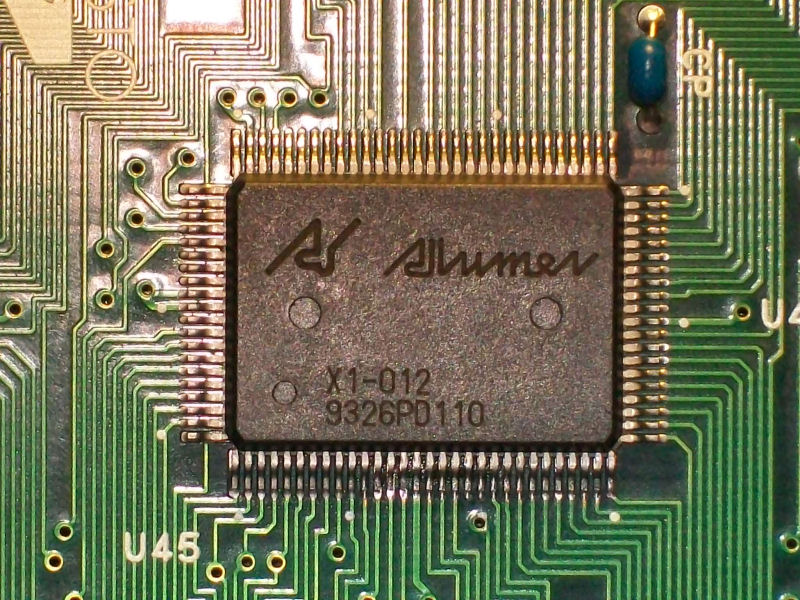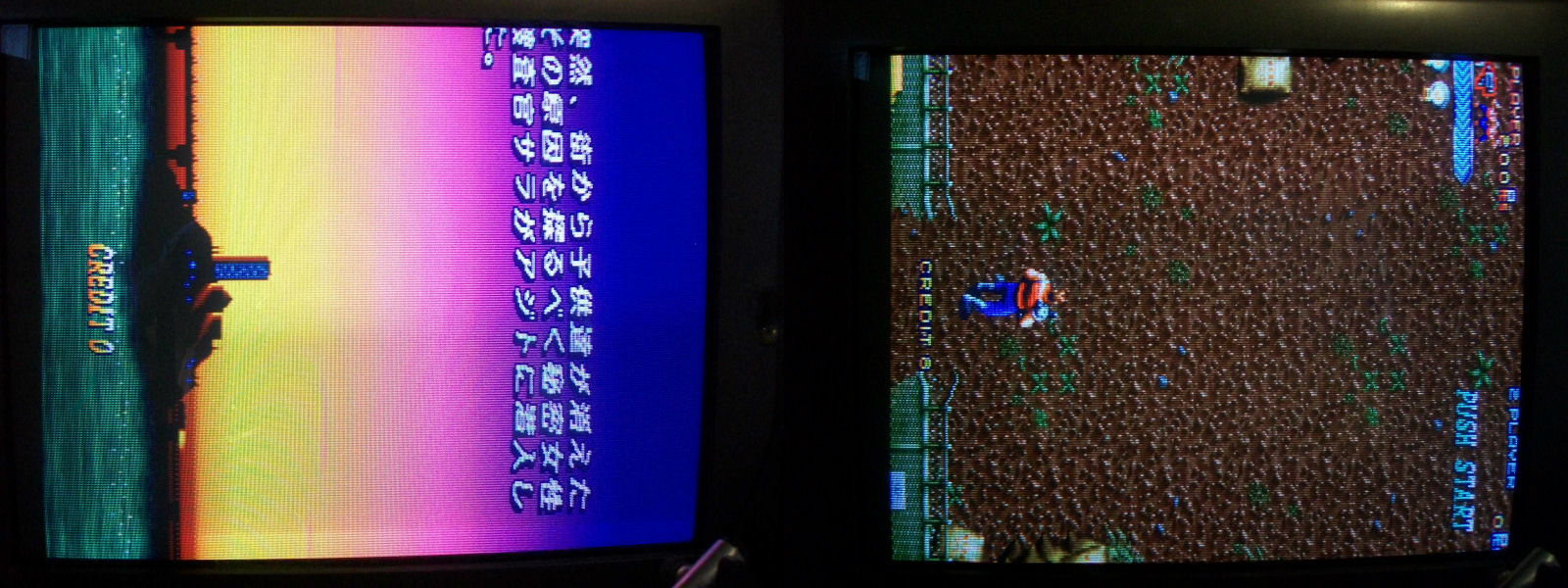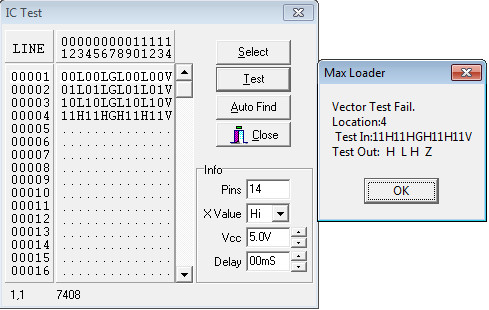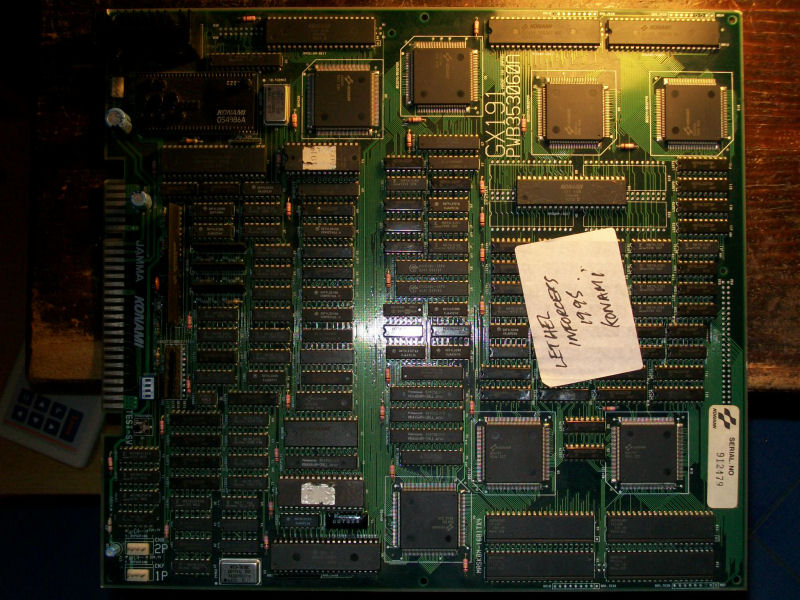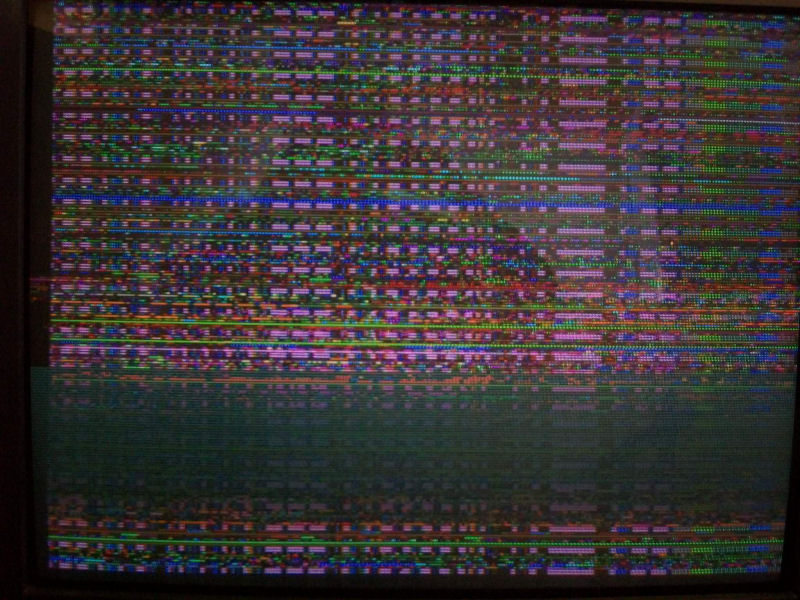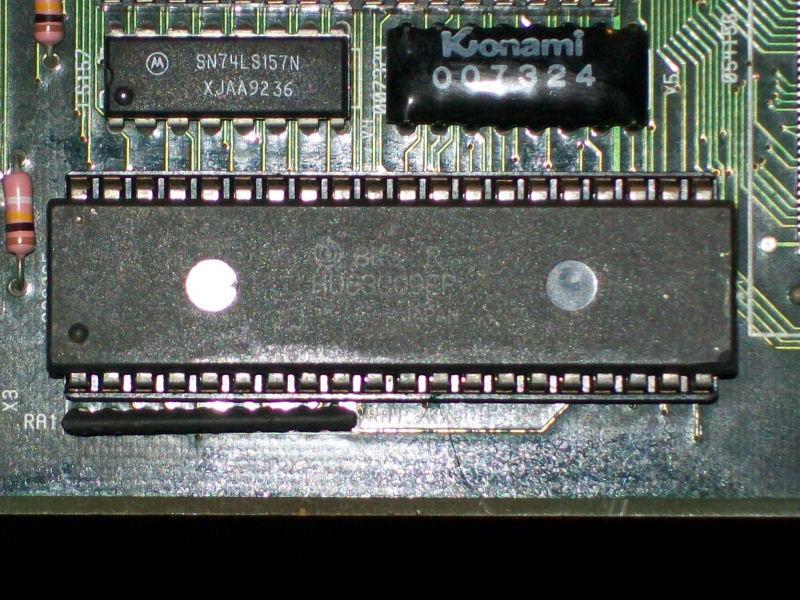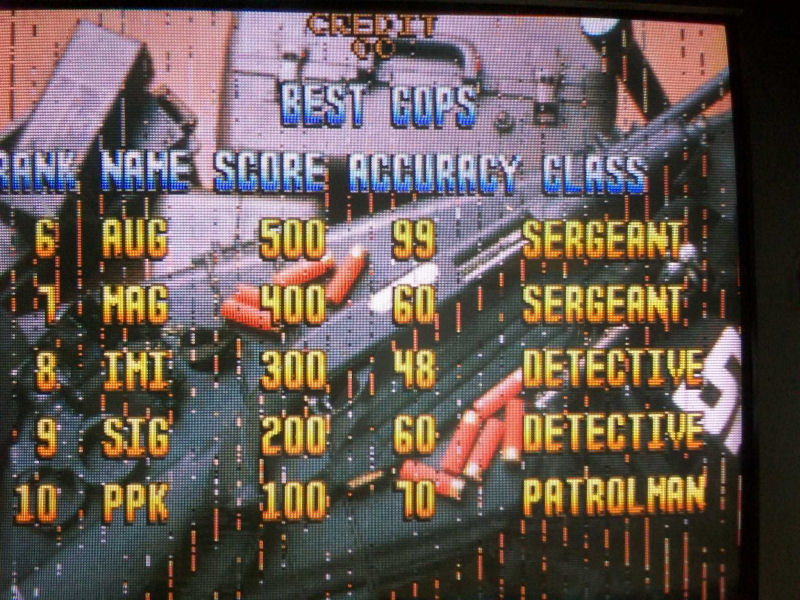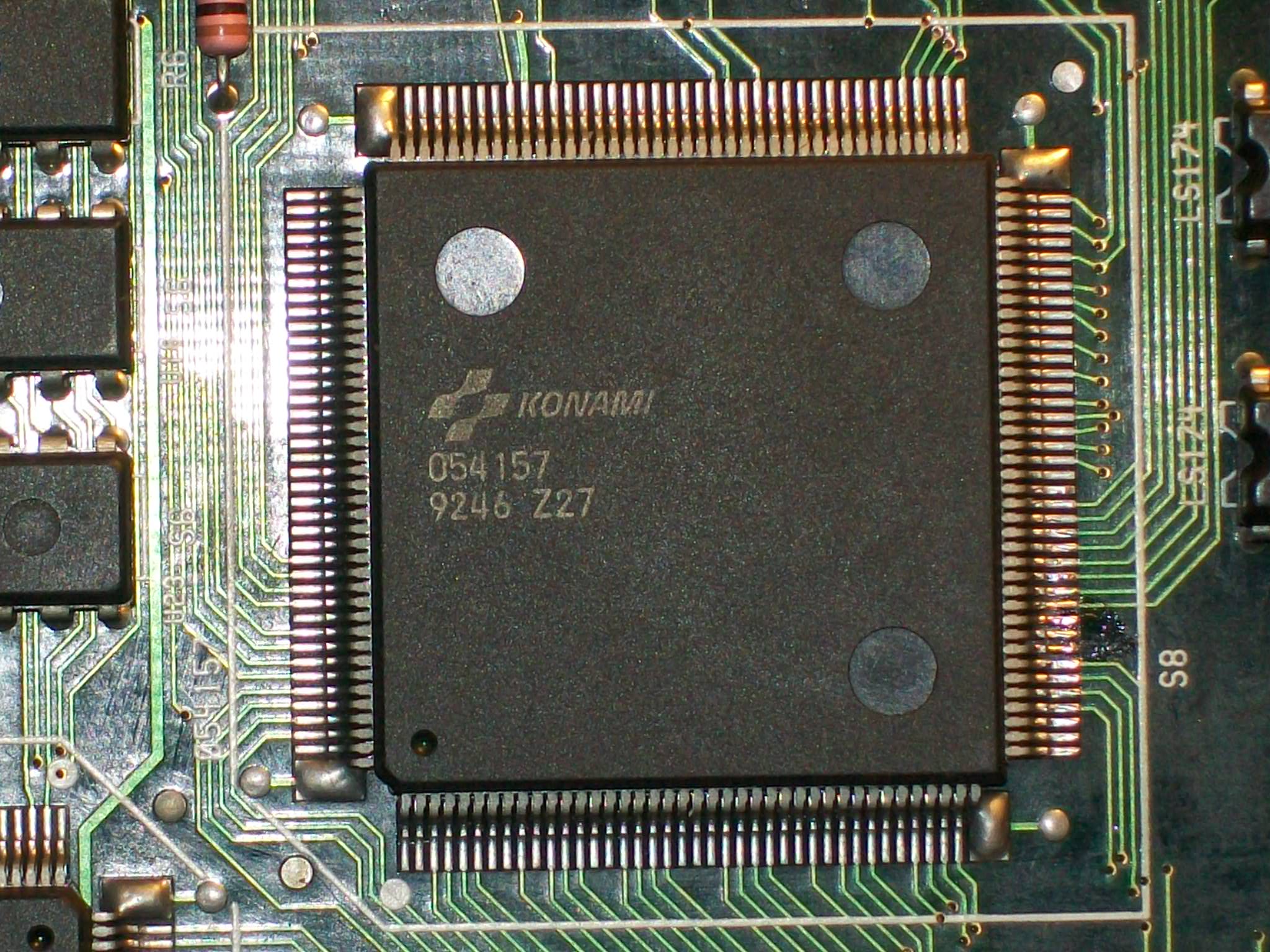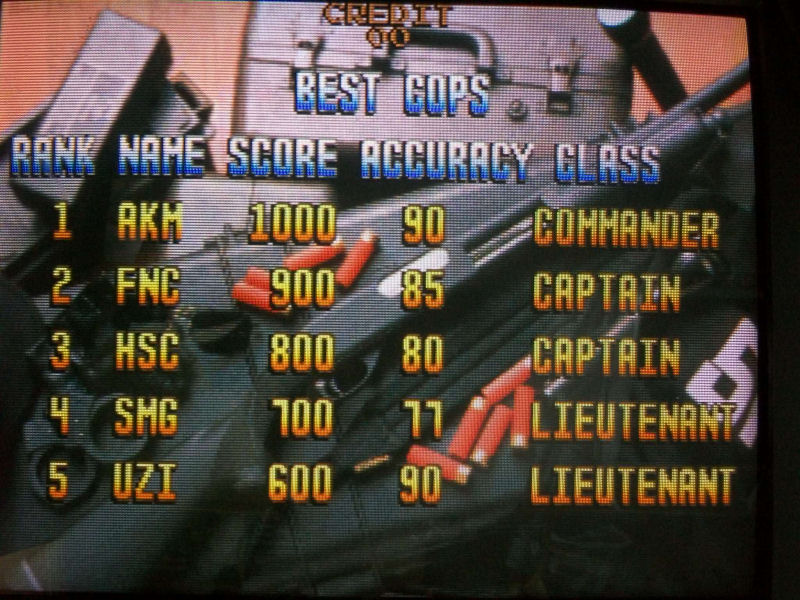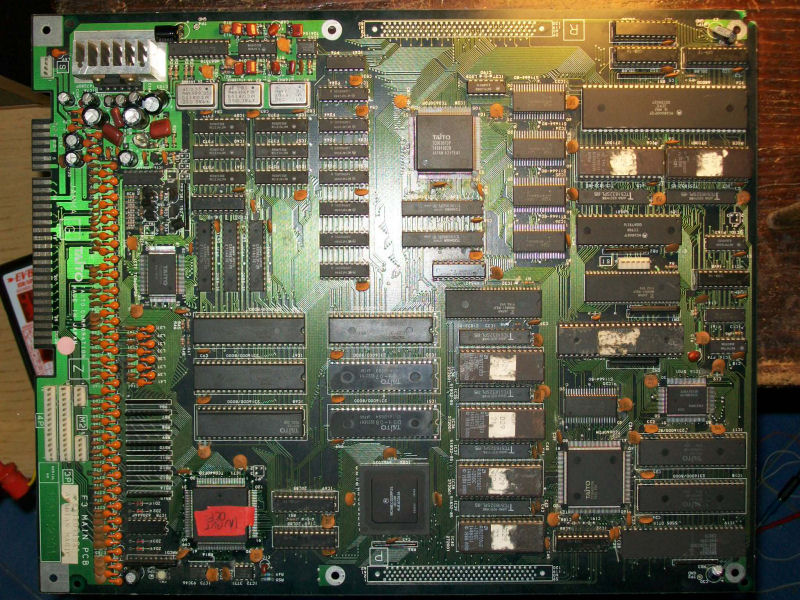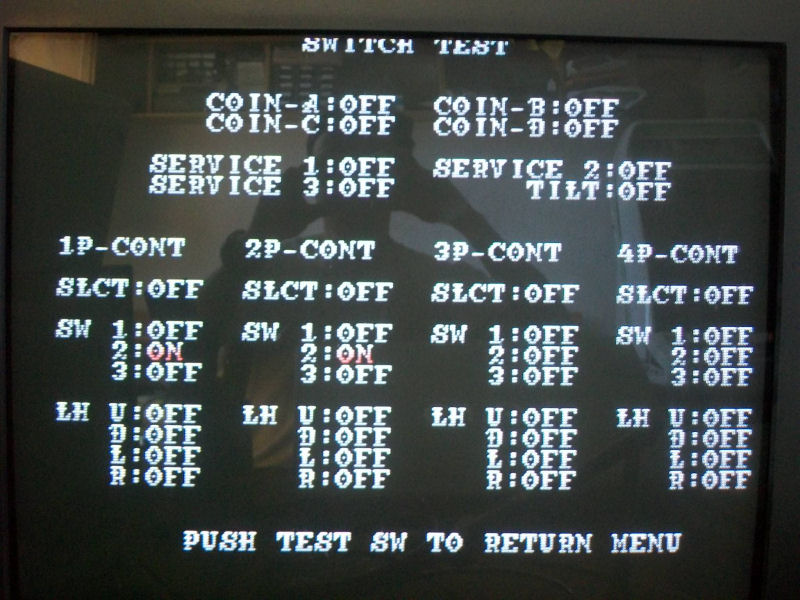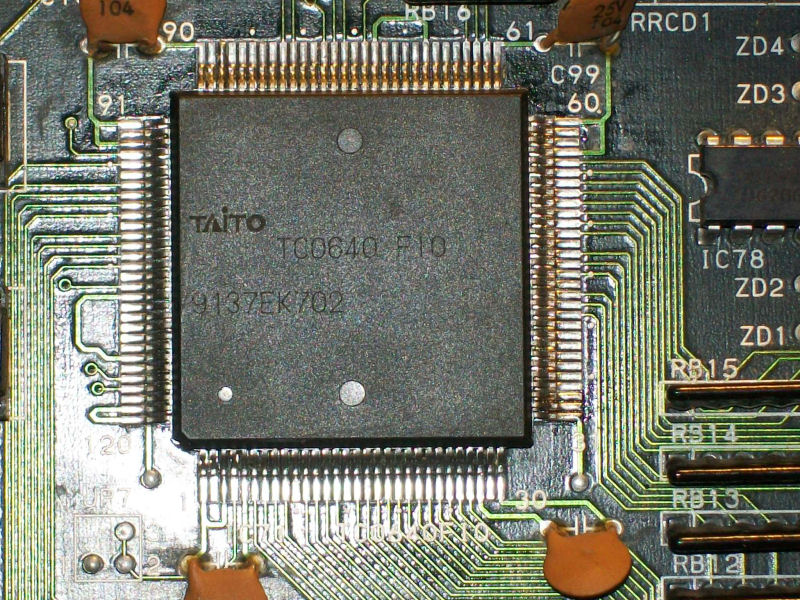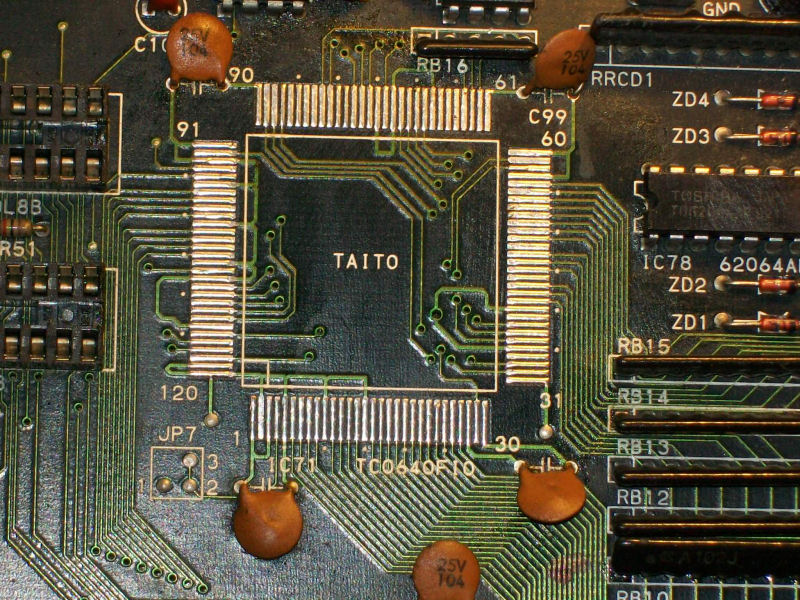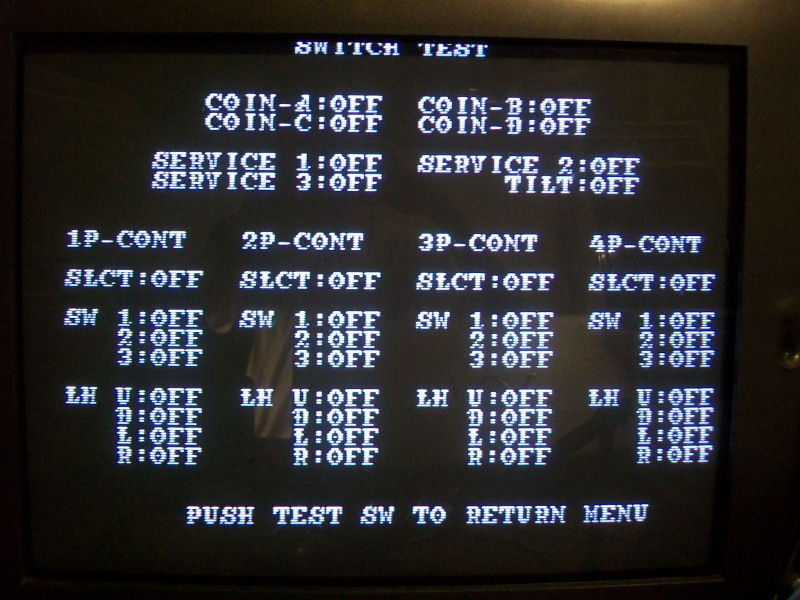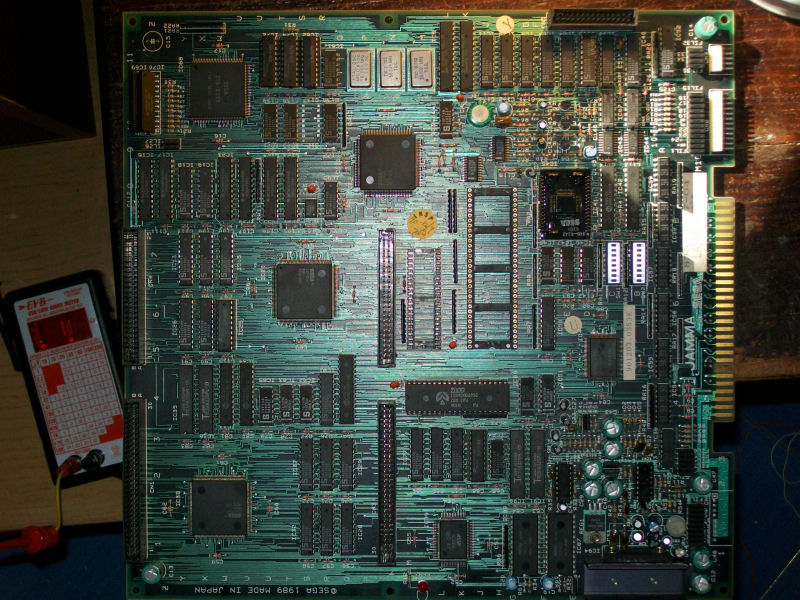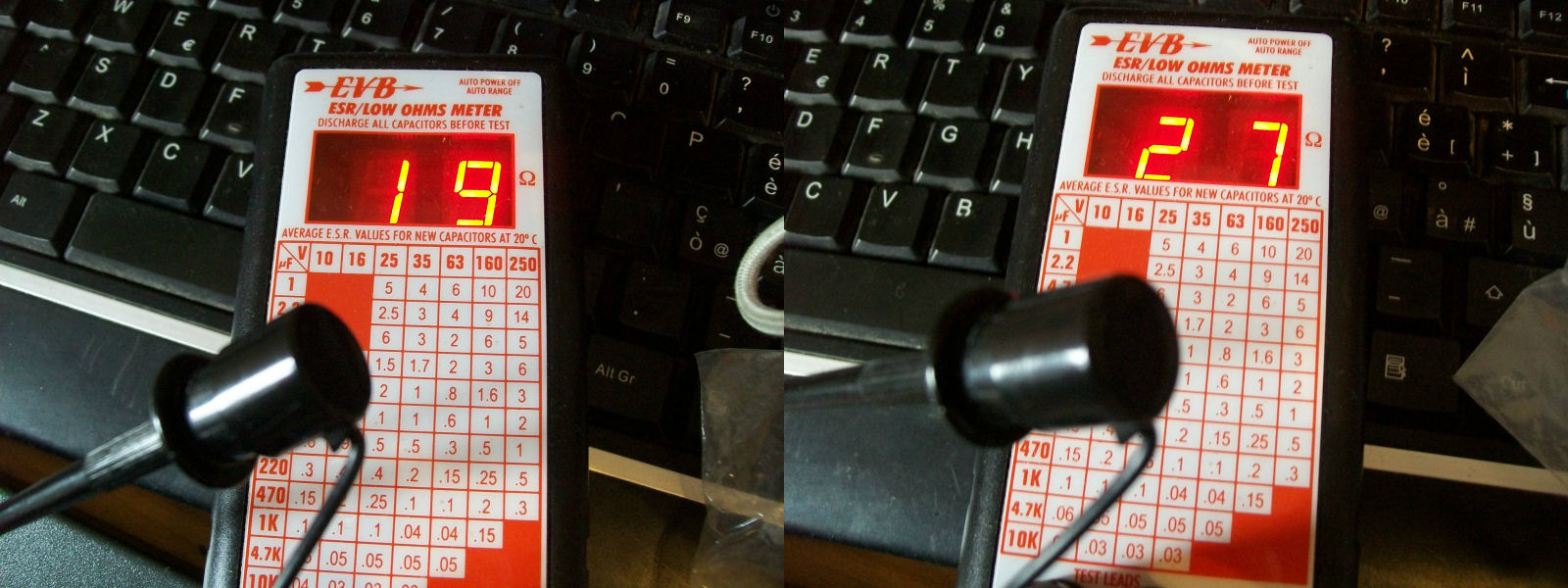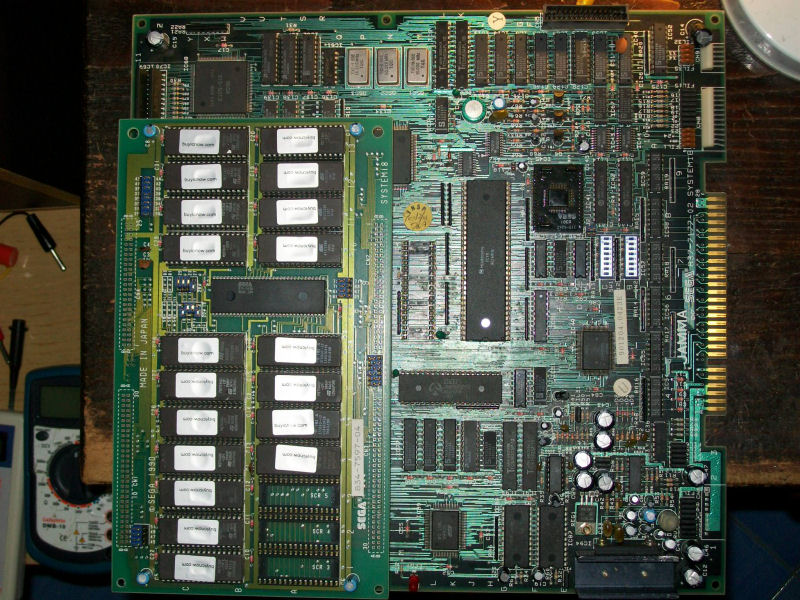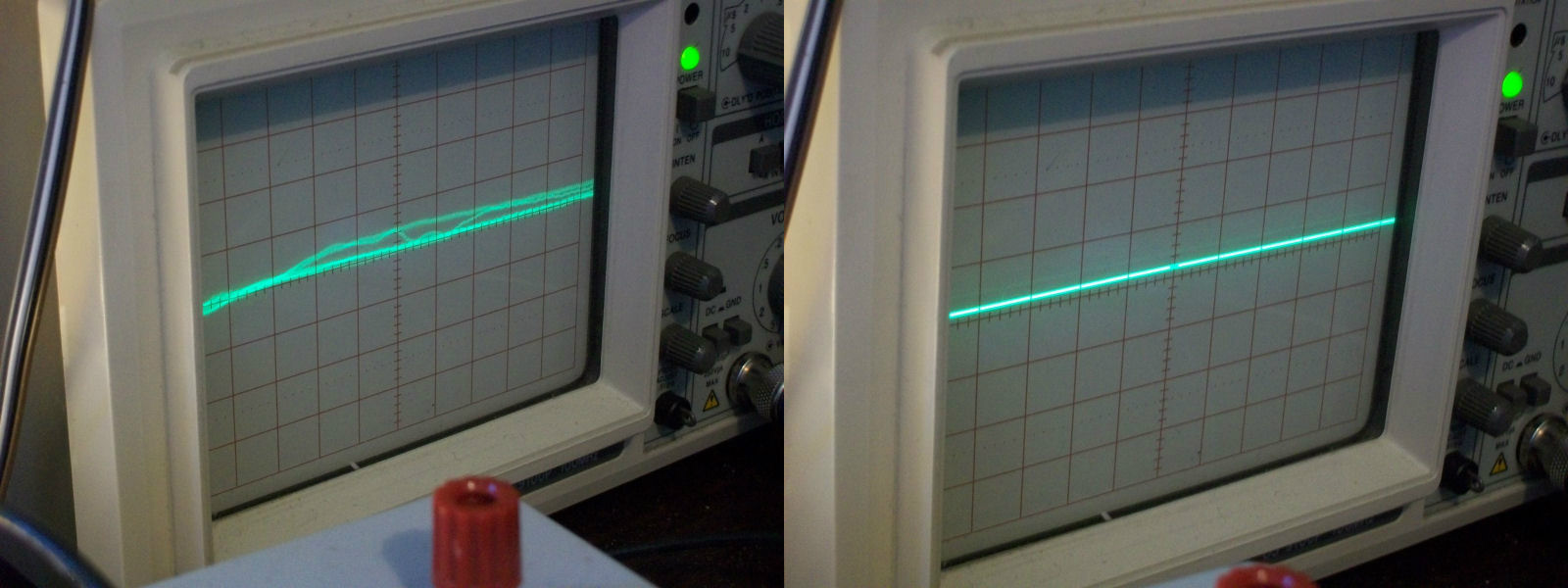Got this mint Gundhara PCB, a vertical shooter similar to Ikari Warriors, manifactured by Banpresto in 1995:
When I powered it up game was fully playable but tilemaps were totally wrong :
Before you start every troubleshooting, first thing to do is studying the hardware.MAME is a great help for every repairer with its invaluable source of information provided.In this case here is an overview of the hardware (thanks to driver developer Luca Elia):
- CPU : 68000 + [65C02] (only in the earlier games)
Custom : X1-001A X1-002A (SDIP64) Sprites
X1-001
X1-002
X1-003
X1-004 (SDIP52) Inputs
X1-005 X0-005
X1-006 X0-006
X1-007 (SDIP42) Video DAC
X1-010 (QFP80) Sound: 16 Bit PCM
X1-011 X1-012 (QFP100) Tilemaps
X1-014 Sprites?
This information pointed me in the right direction, the part of circuit to be analysed was this:
You can see on the right part of the above picture the two custom ASIC tilemaps generator marked ‘X1-012’ (QFP100 package).When I checked the one @U45 I found some lifted pins:
A simple reflow of these pins was enough to restore tilemaps:
I was declaring this board 100% fixed but while testing it I noticed something wrong in its sound, some PCM samples were played wrongly (like enemy shots) compared to good reference of MAME.Once again our beloved emulator source gave me an help to pinpoint this trouble.There is another custom ASIC which is a 16 bit PCM chip marked ‘X1-010’ (QFP80 package) in the sound circuitry @U57:
One pin was lifted, a reflow restored correct sound.
Thanks MAME!This repair log is dedicated to you! 🙂

